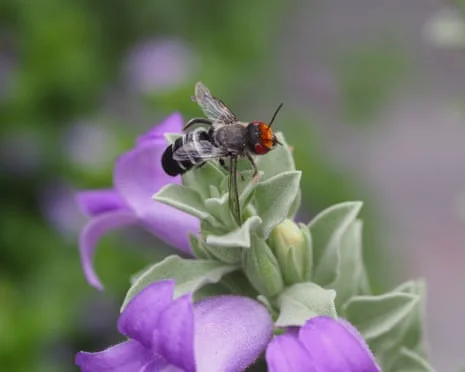
The Hidden Battle: Honey Bees vs Native Bees in Australia
In recent years, the plight of native bee species in Australia has become a pressing concern, particularly as they face competition from the more common European honey bee. Recent research highlights the alarming impact that honey bees may have on native bee populations, leading to potential declines and even extinction of unique species. This issue is not only significant for the survival of native bees but also for the health of ecosystems reliant on their pollination services.
Dr. Kit Prendergast, a lead researcher at Curtin University, conducted a comprehensive study that revealed startling statistics about native bees' reproductive challenges in urban environments where honey bees thrive. Over two spring-summer seasons, Prendergast’s team observed 1,000 native bee nests across various urban bushland and garden sites.

The findings painted a concerning picture: in areas dominated by honey bees, native bees were producing fewer female offspring—a critical issue since female bees are necessary for population sustainability. These smaller populations are exacerbated by higher mortality rates among native bee larvae, likely driven by honey bee competition for pollen and resources. While honey bees foraged from an array of 10.3 floral species, native bees were limited to just 4.3, illustrating a stark disparity in access to crucial food sources.
On another front, the key question arose surrounding the use of commercial bee hotels. Many store-bought options do not adhere to the specific needs of native bees, leading to disillusionment among those attempting to provide refuge for these vital pollinators. Kit Prendergast emphasized the importance of tailored designs that cater specifically to native bees, pointing out that poorly designed hotels often do more harm than good. An effective bee hotel is essential for fostering a supportive environment for native species.
Further complicating the situation, studies suggest that high honey bee densities not only diminish resources but can influence the sex ratios of native bee populations. A higher male-to-female ratio could destabilize future breeding, compounding the challenges already faced. "By boosting honeybee numbers, you can be harming native bees," Prendergast stated, echoing the concerns of conservationists regarding the precarious balance that urban beekeeping introduces into ecosystems.
In light of these findings, scientists are advocating for legislative measures to limit urban beekeeping and protect native species from undue competition. Investing in native plant diversity in urban spaces, which honey bees are less prone to exploit, could also bolster native bee populations.
The fate of Australia's native bees teeters precariously on a knife-edge, with immediate action required to preserve not just their populations but also a crucial component of our biodiversity. What steps can we, as a community, take to safeguard these indispensable species? Share your thoughts below and let's discuss how we can support native bees in our backyards!